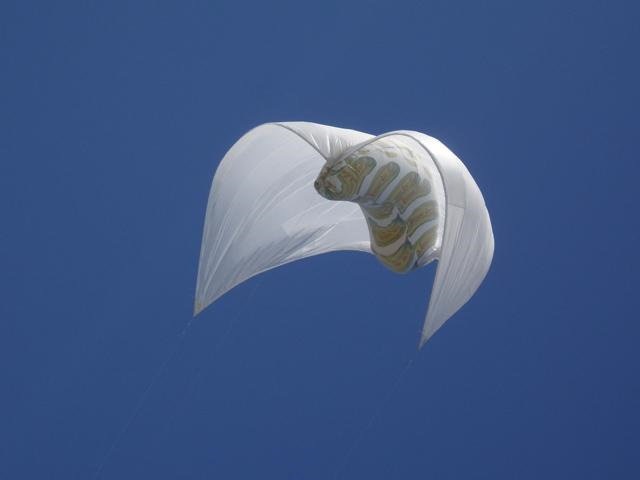Though LTA is an interesting thought, I don’t see much practicality in it. There are a few more practical options imho:
- power a lifter by electric/energy from the ground
- power the kite mechanically from the ground by tugging the tethers
- have a lifter so high that 24/7 wind is guaranteed
The first two options will require all losses to be continually replenished. For a wing, the glide number (lift to drag ratio) describes the amount of losses per generated lift. High glide numbers will account for less power used during lulls. If the tether is very long and moving through the air, the drag is quite large and the power used to stay airborne during lulls will probably offset the power produced otherwise.
For electrical power transmission, the conductive tether adds substantial weight further increasing no-wind power consumption.
If you want a permanent lifter to stay at an high altitude, «dancing kites» with really high efficiency seems the only option worth pursuing to me.
If the lifter must stay airborne during the worst storms, I would argue that most huge superlightweight structures (such as LTA) are just not feasible. Unless you accept blowdown, such structures must have a certain glide number in high winds that will determine the elevation angle of the tether. The problem is reducing the drag of such structures, and once drag is minimized, how to sustain the lift that must be somewhat larger than the drag, and increasing with windspeed to the power of two.
I just dont see it happening for energy producing kites at scale.
For now at least, I am content pursuing AWE that is landed for low winds and high winds. It’s the pragmatic approach. Automatic landing and launch is an unsexy option, but compared to these other options, it is doable without inventing a new technology.
The pragmatic solution: either a simple tower or motorized drone to initiate launch, perhaps as a taxi that detached from the energy producing rig or built into the rig itself. Russian doll «Matrushka» increase in size of lifter kites may be a path to huge scale without weight and cost penalties.
Now if we still want to pursue LTA or ground based energized kites, perhaps they could be feasible at lowest possible altitude to keep the drag and weight to a minimum. For LTA gas in the form og hydrogen could be supplied through a tube and the gas could be produced at the ground. Once the wind blows, it could turn into a kite using ram-air construction and able to supply considerable utility lift.
All this being said, a simple tower/mast or a taxi drone seem the most viable options right now.
